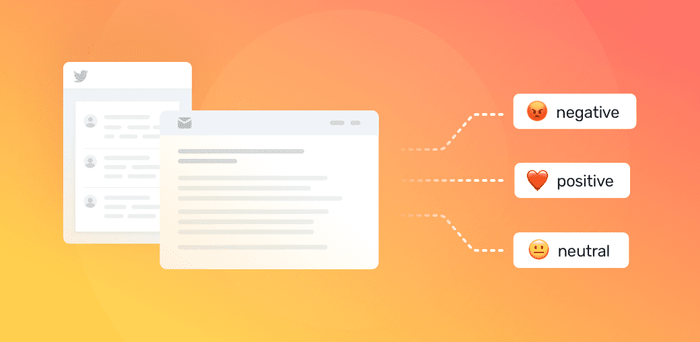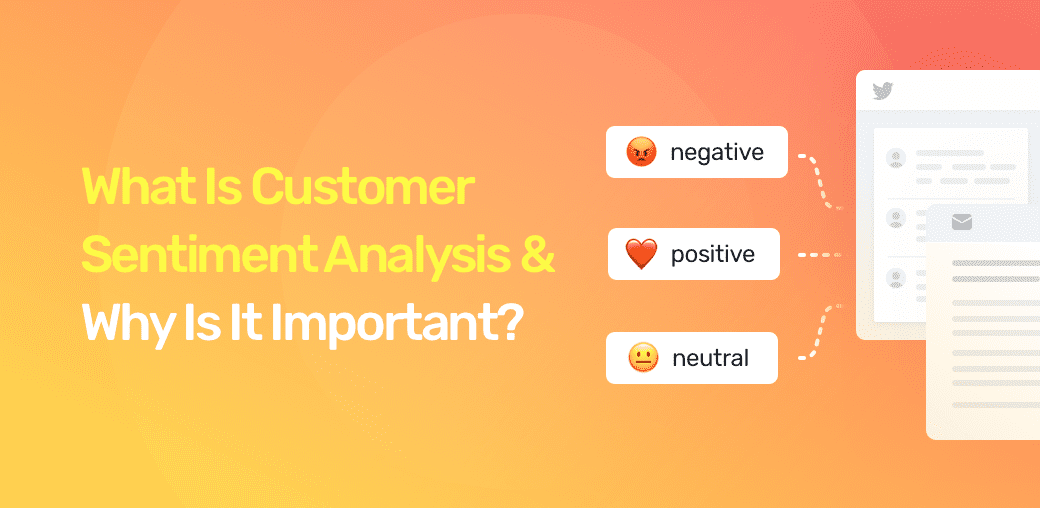In today’s rapidly evolving business landscape, understanding customer sentiment has become paramount. Organizations across industries are increasingly recognizing the significance of analyzing customer sentiment to gain valuable insights into their preferences, opinions, and emotions. In this article, we will delve into the world of customer sentiment analysis, exploring its importance, methodologies, tools, and how it can drive business growth.
The Significance of Customer Sentiment Analysis

Understanding customer sentiment provides businesses with a direct line to their customers’ thoughts and feelings. Positive sentiments highlight areas of success, while negative sentiments pinpoint areas that require improvement. Moreover, customer sentiment analysis helps companies gauge customer loyalty, identify brand advocates, and anticipate market trends.
Methodologies for Analyzing Customer Sentiment
1. Natural Language Processing (NLP)
NLP is a branch of artificial intelligence that enables computers to understand, interpret, and generate human language. NLP techniques are pivotal in sentiment analysis as they allow machines to comprehend the context, tone, and nuances of customer feedback.
2. Machine Learning Algorithms
Machine learning algorithms, particularly supervised learning, play a crucial role in sentiment analysis. These algorithms are trained on labeled datasets to classify text into positive, negative, or neutral sentiments. The more data they process, the more accurate their predictions become.
Customer Sentiment Analysis Tools
1. Sentiment Analysis APIs
Several platforms offer pre-built sentiment analysis APIs that can quickly evaluate customer sentiments in text. These APIs provide a user-friendly solution for businesses seeking rapid insights without developing complex algorithms.
2. Social Media Listening Platforms
Social media is a treasure trove of customer opinions. Listening platforms allow businesses to monitor and analyze customer sentiments across various social media platforms, helping them stay attuned to public perception.
3. Custom Analytics Dashboards
For a more tailored approach, businesses can develop their analytics dashboards. These dashboards can integrate data from different sources, providing a comprehensive view of customer sentiment and enabling informed decision-making.
Steps to Perform Customer Sentiment Analysis
1. Data Collection
Gathering data from diverse sources is the first step. This data can include customer reviews, social media posts, surveys, and more.
2. Preprocessing
Raw data often contains noise and irrelevant information. Preprocessing involves cleaning and organizing the data to ensure accurate analysis.
3. Sentiment Labeling
In this step, texts are labeled with sentiments (positive, negative, neutral) to create a training dataset for machine learning algorithms.
4. Analysis and Interpretation
Machine learning models or NLP techniques are applied to the labeled data to classify sentiments. The results are then interpreted to extract meaningful insights.
Enhancing Customer Relationships through Sentiment Analysis
By understanding customer sentiments, businesses can tailor their interactions, address concerns, and appreciate positive feedback. This fosters a strong and loyal customer base.
Tailoring Products and Services
1. Identifying Pain Points
Negative sentiments often highlight areas where products or services are falling short. Addressing these pain points can lead to substantial improvements.
2. Innovation and Improvement
Positive sentiments offer insights into what customers love about products. These insights can drive innovation and the creation of new features.
Crafting Targeted Marketing Campaigns
Sentiment analysis aids in creating marketing campaigns that resonate with the target audience. By aligning messaging with customer values, businesses can boost engagement.
Mitigating Negative Sentiment
Identifying negative sentiment early allows businesses to take swift corrective actions, preventing potential reputation damage.
Challenges
1. Sarcasm and Irony
Sarcasm and irony can confuse sentiment analysis algorithms, as they often rely on literal language interpretation.
2. Contextual Understanding
Understanding sentiment requires grasping context. Certain words might have different sentiments based on their usage.
Future Trends
As AI and NLP continue to advance, sentiment analysis will become more accurate and nuanced. Businesses will harness these insights to make data-driven decisions.
Conclusion
Sentiment analysis is a powerful tool that unlocks actionable insights from the vast sea of customer feedback. By employing advanced methodologies and tools, businesses can enhance customer relationships, tailor their offerings, and stay ahead in an ever-evolving market landscape.
Are you ready to harness the power of customer sentiment analysis for your business? Request a demo from AIM Technologies today and discover how you can gain a competitive edge.
FAQs
What is sentiment analysis?
- Sentiment analysis is the process of analyzing customer feedback to understand their opinions and emotions.
How does sentiment analysis benefit businesses?
- Sentiment analysis helps businesses identify areas for improvement, tailor their marketing strategies, and build stronger customer relationships.
What challenges does sentiment analysis face?
- Sentiment analysis struggles with detecting sarcasm, and irony, and understanding the context of certain phrases.
Can sentiment analysis predict market trends?
- Yes, sentiment analysis can provide insights into emerging market trends based on customer opinions and reactions.
What does the future hold for sentiment analysis?
- The future of sentiment analysis involves more accurate AI-driven insights, leading to more informed decision-making.




